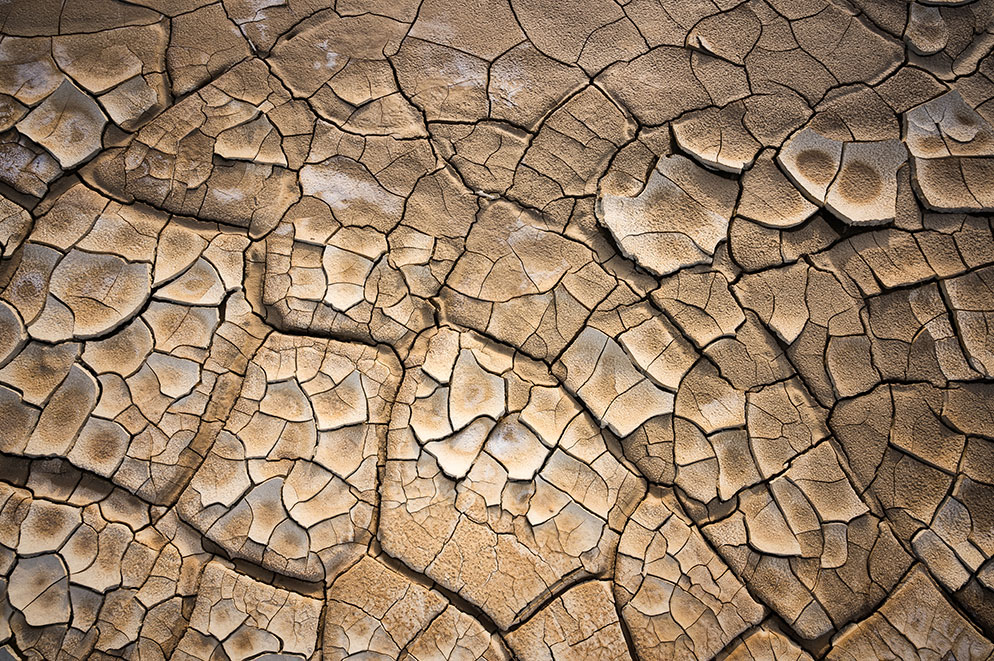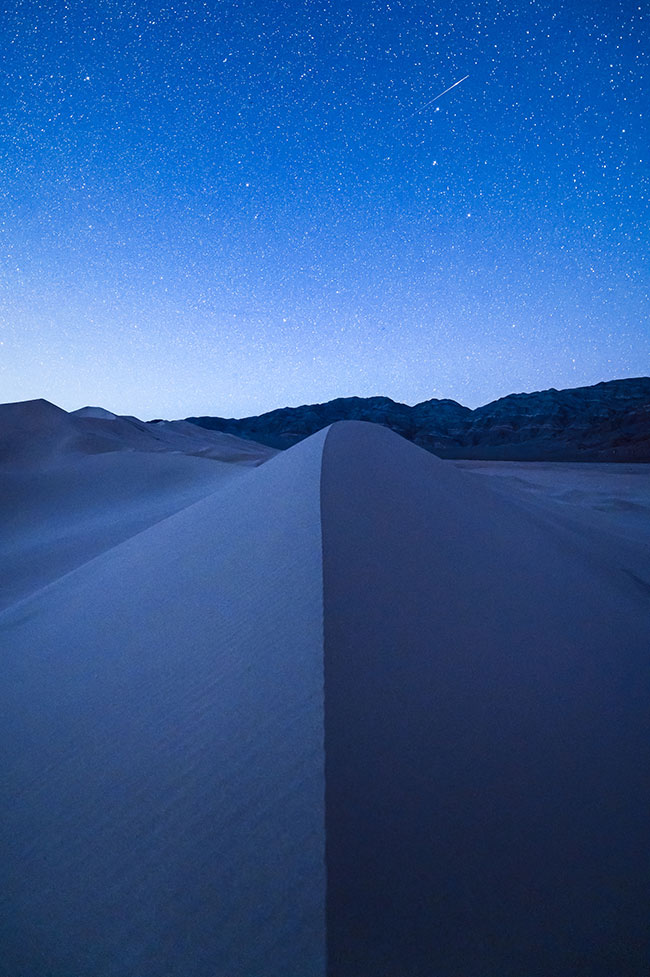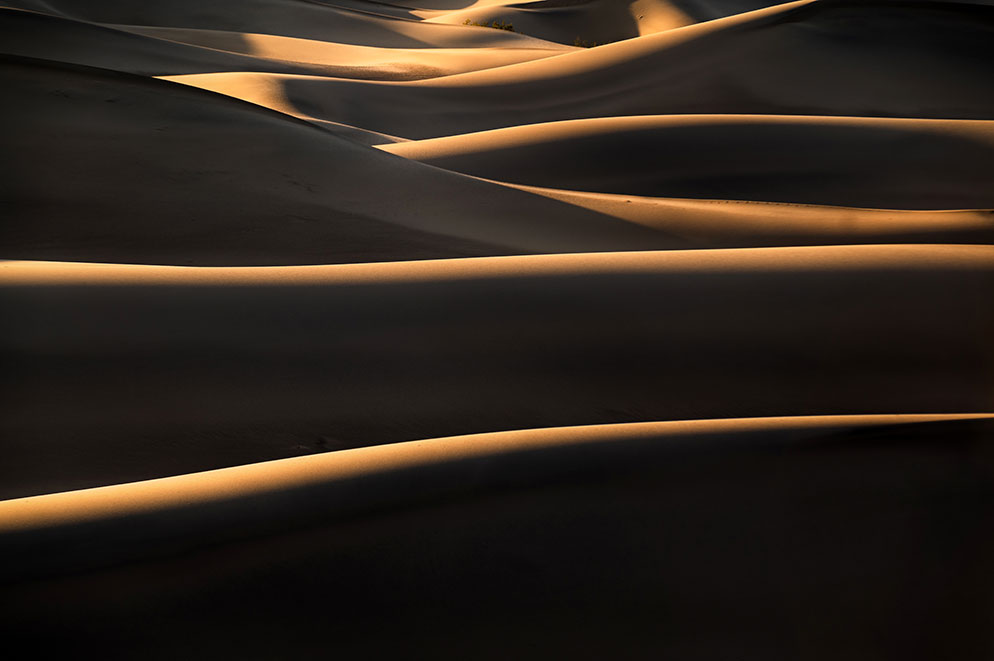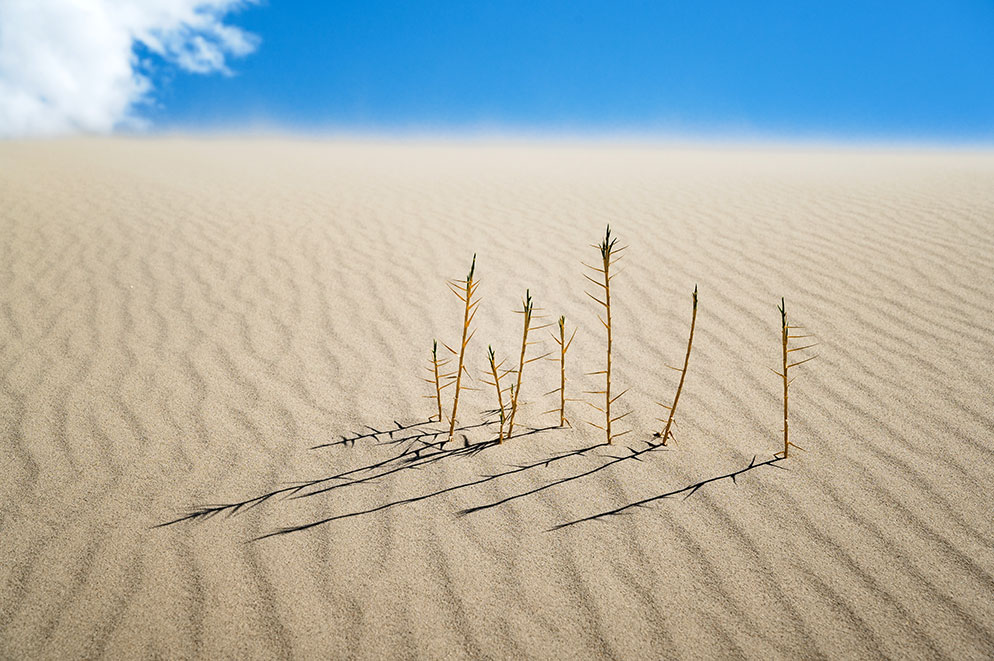The Z 6 Stakes a Claim to Landscape Photography
Breaking Free - A playa—a dry lake bed—in Death Valley National Park. The cracks change as rain comes in and the lake bed dries in new patterns. "I caught it as most of the cracks were starting to form a month after a rainstorm," Taylor says. "It's hand held, using the camera's built-in stabilization and the tilt screen, with the camera away from my body so my feet wouldn't be in the picture." Z 6, NIKKOR Z 24-70mm f/4 S, 1/125 second, f/8, ISO 100, manual exposure, Matrix metering.
Taylor Gray calls it "the canal incident."
He’ll be reading this, and it's still a painful memory, so we'll get past it quickly: Amsterdam, night photography above a canal, an unfamiliar tripod. He turns the wrong knob and in seconds his D750 and telephoto lens go into the water.
A couple of weeks later and Taylor's at the Consumer Electronics Show in Las Vegas to speak at the Nikon booth. Here he'll be able to scope out a replacement for his D750. He expects it'll be a D850.
"I'd always been shooting with DSLRs," he says, "and didn't think too much about mirrorless. My thing was, Oh, I’ll move up to a D850 eventually." But at the show, where the Z 7 and Z 6 mirrorless cameras were pretty much the center of attention...well, things changed. "I realized what you can do with mirrorless in both stills and video and how easy it is to change between them. The Z 6 was such an impressive camera that everything changed."
It was in fact a camera that fit all his needs: light weight, small size and versatility for his travels in search of images; autofocus for video; "and the coolest thing: seeing the picture [in the electronic viewfinder] before you take it so you can change the exposure and see the way the light is going to look."
Dark Side of the Dune - The Eureka Dunes in the northern part of the park, at twilight. "To get there took a ten-mile, nerve-racking drive on a dirt road that's notorious for flat tires, but the great part is there aren't a lot of people going out there. I scrambled up the side of the dune, and the fading light provided enough contrast so you can distinguish between the light and dark sides. It's a tripod shot, and I focused on the stars—and I even got a passing satellite, toward the upper right." Z 6, AF-S NIKKOR 14-24mm f/2.8G ED, Mount Adapter FTZ, 20 seconds, f/2.8, ISO 6400, manual exposure, Matrix metering.
Dots and Lines - "This was in the same general area as the Breaking Free photo, but this time it's a past-twilight landscape featuring the lake bed. I used the Z 6's focus shift feature to get everything sharp." Z 6, AF-S NIKKOR 14-24mm f/2.8G ED, Mount Adapter FTZ, 15 seconds, f/2.8, ISO 6400, manual exposure, Matrix metering.
An Early Start
Taylor Gray got his picture-making start at 14, when the images taken with his father's camera on a backpacking trip in Colorado forged a link between the great outdoors and photography. He's now 20, and he's looking forward to his senior year at Oregon State University, where he majors in marketing in order to build the business savvy that will support his goal of a career in professional photography and videography.
Taylor's photographs have been published in a variety of media and featured by Nikon as well as other major companies. He is a careful and deliberate photographer, and his standard operating procedure is to observe and analyze before, during and after the making of an image. On all counts, the Z 6 was a natural fit for him, given its video capabilities and the image quality he depends on to capture the detail, contrast and tonal range that mark his photographs.
Game of Shadows - Sunrise at Mesquite Flat Sand Dunes in Death Valley. "One of the best parts of dune photography is the contrast between light and dark, and as the sun gets higher, the light gets harsher and the shadows smaller; this was shot in the window of time when the light and shadows were more balanced, and I got a nice abstract image. This is one of the park's most popular destinations, so there's always a lot of footprints. To find a pristine section, there's nothing to do but hoof it out there." Z 6, NIKKOR Z 24-70mm f/4 S, 1/125 second, f/8, ISO 100, manual exposure, Matrix metering.
"With the Z 6 I especially like composing with my eye to the viewfinder, and then if I take my eye away from the finder, the LCD will automatically and instantly display the image. And shooting video while looking right through the finder—that's going to be really important."
Overall picture quality was never in question—it was instantly apparent with the NIKKOR Z 24-70mm f/4 S native lens, while the Mount Adapter FTZ provided seamless use of his F mount NIKKOR lenses. "The most noticeable difference shooting with the Z 6 was in low-light situations," Taylor says. "There were times when I needed to bump up the ISO, and I had absolutely no problem going to 800 or 1000 or higher in low-light situations—with no need to compensate for noise later on at the computer."
Intersection - "Sunrise on the same morning, in a similar area as the previous shot. I think in landscape photography wide-angle photos are pretty common. You include everything in the field of view and people say, 'That's nice,' and move on. But I think some of the most powerful images focus on the small details of the landscape and leave the viewer wondering, What am I looking at...what's around the image? Those photos spark their imaginations." Z 6, AF-S Zoom-NIKKOR 80-200mm f/2.8D IF-ED, Mount Adapter FTZ, 1/125 second, f/8, ISO 100, manual exposure, Matrix metering.
And there was an advantage in no-light scenarios as well. "Focusing a camera on the stars in the dark is probably one of the most challenging things in astrophotography. It makes a big difference if the stars are sharp or soft—out of focus bugs me—and in manual focusing mode I turned on the Z 6's focus peaking, zoomed in on the stars and saw how sharp they were right on the LCD."
Instantly seeing in the viewfinder the results of camera settings is probably one of the most significant advantages for him, as subtle changes in the balance of light and shadow can change the story the image is telling.
"What's also really impressive is the fact that when I'm using a VR [Vibration Reduction] F mount NIKKOR lens, it will work through the adapter along with the camera's built-in stabilization. That blew my mind—how many stops of stability I could get with the Z 6."
Resilience - A Death Valley afternoon with winds Taylor estimates at 30 mph blurring the horizon line with blown sand. He points out how the shadows of the dune grass contrast not only with the colors, but also with the vertical leading lines of the sand ripples and the growth of the grass—"to make the image pop a little more." Z 6, NIKKOR Z 24-70mm f/4 S, 1/400 second, f/8, ISO 100, manual exposure, Matrix metering.
Even a brief time working with Z 6 on a trip to Death Valley has convinced Taylor that it's now going to be his system camera. "I've got some jobs lined up that will involve stills and video," he says, "and now I have the perfect camera to handle that."
We have only one suggestion to offer: please be sure to take along a familiar tripod.












